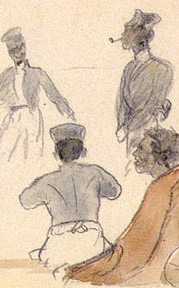
Griqualand East, officially known as New Griqualand, was one of four short-lived Griqua states in Southern Africa from the early 1860s until the late 1870s and was located between the Umzimkulu and Kinira Rivers, south of the Sotho Kingdom.

The Cape Corps and its predecessor units were the main military organisations in which the Coloured members of South Africa's population served.

The Chief Langalibalele Rifles is a reserve infantry regiment of the South African Army.

The Buffalo Volunteer Rifles (BVR) is an infantry regiment of the South African Army. As a reserve unit, it has a status roughly equivalent to that of a British Army Reserve or United States Army National Guard unit.

The Chief Maqoma Regiment is a reserve infantry regiment of the South African Army. The regiment is located in the city of Port Elizabeth.

The Autshumato Anti-Aircraft Regiment is a reserve air defence artillery regiment of the South African Army.
South Africa has a number of Traditional Regiments. These are mostly South African Army Reserve Force regiments that were established either under previous colonial governments or by the Apartheid regime and which have continued to exist by accepting the authority of the government-of-the-day - be it colonial, union, Apartheid, or fully democratic.
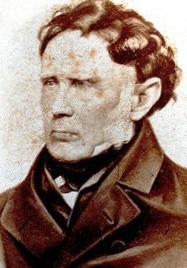
Sir Andries Stockenström, 1st Baronet, was lieutenant governor of British Kaffraria from 13 September 1836 to 9 August 1838.
The Cape Colonial Forces (CCF) were the official defence organisation of the Cape Colony in South Africa. Established in 1855, they were taken over by the Union of South Africa in 1910, and disbanded when the Union Defence Forces were formed in 1912.
Colonel Zachary Stanley Bayly, (1841–1916) was a South African colonial military commander. He was commissioned in the British Army, and was stationed in the Cape Colony from 1877.
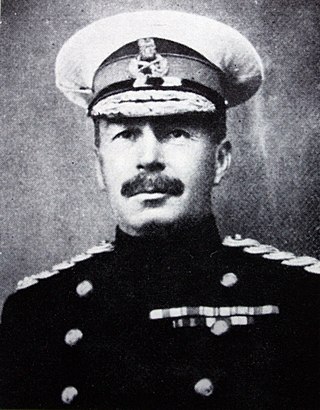
Major-General Sir Henry Timson Lukin was a South African military commander. He fought in the Anglo-Zulu War (1879) and the Basutoland Gun War (1880–1881), the Bechuanaland Campaign (1897), and the Anglo-Boer War when he was in command of the artillery during the defence of Wepener for which action he was awarded a Distinguished Service Order. From 1900 to 1901 he commanded the Cape Mounted Riflemen, from 1904 to 1912 he was Commandant-General of the Cape Colonial Forces and in 1912 Inspector-General of the Permanent Force of the Union of South Africa.
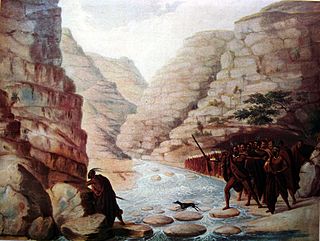
The Xhosa Wars were a series of nine wars between the Xhosa Kingdom and the British Empire as well as Trekboers in what is now the Eastern Cape in South Africa. These events were the longest-running military resistance against European colonialism in Africa.

Sir John Gordon Sprigg, was an English-born colonial administrator and politician who served as prime minister of the Cape Colony on four different occasions.
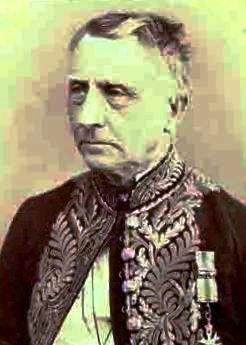
Sir Richard Southey was a British colonial administrator, cabinet minister and landowner in South Africa.
The Cape Mounted Yeomanry was a military force created on a militia basis by Act 5 of 1878 in the Cape Colony, with a strength of 3,000 in three regiments, to act in conjunction with the Cape Mounted Riflemen on the eastern frontier. About 600 men were put into the field for the Basuto Rebellion in 1880.

Charles Pacalt Brownlee was a politician and writer of the Cape Colony. He was the first Secretary for Native Affairs in the Cape.

Thembuland, Afrikaans: Temboeland, is a natural region in the Eastern Cape province of South Africa. Its territory is the traditional region of the abaThembu, one of the states of the Xhosa nation.

In the Colonies and former Boer Republics which became the Union of South Africa in 1910, several unofficial military decorations and medals were instituted and awarded during the nineteenth and early twentieth century. Sir Harry Smith's Medal for Gallantry is an unofficial military decoration for bravery, awarded for actions following the siege of Fort Cox in December 1850, at the beginning of the 8th Cape Frontier War. The medal was privately instituted in 1851 by Major General Sir Henry George Wakelyn Smith Bt GCB, at the time the Governor and Commander-in-Chief of the Cape of Good Hope.
The Cape Mounted Police was the principal law enforcement agency of the Cape Colony during its last three decades. In addition to its ordinary policing duties, it was a para-military organisation, which saw active service in several campaigns and operations, including the Anglo-Boer War (1899–1902). The force was fully militarised in 1913 and transferred to the new South African Army as a mounted rifle regiment.


